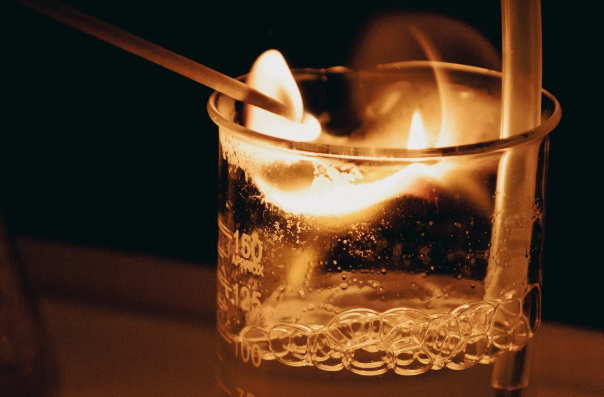city tech bio 2311 e313 human anatomy and physiology i
Introduction to Human Anatomy and Physiology
Understanding the human body is like uncovering the mysteries of a well-designed machine. In City Tech Bio 2311 E313, Human Anatomy and Physiology I, students embark on a fascinating journey through the complex systems and structures that make up our bodies. This course serves as the foundation for anyone aspiring to delve deeper into the biological sciences or pursue a career in healthcare.
Course Overview
Course Objectives
City Tech Bio 2311 E313 aims to provide students with a comprehensive understanding of human anatomy and physiology. By the end of the course, students will have a solid grasp of the body’s structure and functions, preparing them for more advanced studies in the field. The course objectives include:
- Identifying and describing the major organs and systems of the human body.
- Understanding the physiological processes that maintain life.
- Developing practical skills through laboratory work.
Topics Covered
This course covers a wide range of topics essential for understanding human anatomy and physiology. Students will explore the skeletal, muscular, circulatory, and respiratory systems, among others. Detailed studies will also include the physiological processes that keep our bodies functioning efficiently.
Understanding the Human Body
The Skeletal System
The skeletal system forms the framework of the human body, providing structure, protection, and movement.
Bones and Joints
Bones are living tissues that constantly remodel and repair themselves. Joints, where two bones meet, allow for various types of movement and flexibility. Understanding the skeletal system is crucial for learning how the body supports and protects itself.
The Muscular System
The muscular system is responsible for movement and stability.
Muscle Types and Functions
There are three types of muscles: skeletal, smooth, and cardiac. Each type has a unique role, from moving bones to pumping blood and aiding in digestion. Knowing these functions helps in understanding how our bodies perform daily activities.
Major Organs and Systems
The Circulatory System
The circulatory system is the body’s transportation network, moving blood, nutrients, and waste products throughout the body.
Heart and Blood Vessels
The heart, a powerful muscle, pumps blood through an extensive network of blood vessels. This system ensures that every cell receives oxygen and nutrients while removing waste products.
The Respiratory System
The respiratory system allows us to breathe and exchange gases with our environment.
Lungs and Breathing
The lungs are the primary organs of the respiratory system. They facilitate the exchange of oxygen and carbon dioxide, which is vital for cellular respiration and energy production.
Key Physiological Processes
Homeostasis
Homeostasis is the body’s ability to maintain a stable internal environment despite external changes.
Maintaining Balance in the Body
Processes like temperature regulation, pH balance, and electrolyte levels are examples of homeostasis. These mechanisms are essential for survival and optimal functioning.
Metabolism
Metabolism encompasses all chemical reactions that occur within the body.
Energy Production and Use
Metabolic processes convert food into energy, which is used for growth, repair, and maintaining bodily functions. Understanding metabolism is key to comprehending how our bodies utilize nutrients.
Practical Applications
Laboratory Work
Hands-on laboratory work is a critical component of City Tech Bio 2311 E313.
Dissection and Observation
Students gain practical experience through dissections and observations, allowing them to see firsthand the structures they study in textbooks. This hands-on approach enhances their understanding and retention of the material.
Clinical Relevance
The knowledge gained in this course has direct applications in healthcare.
Applying Knowledge to Healthcare
Understanding human anatomy and physiology is fundamental for diagnosing and treating medical conditions. This course prepares students for careers in medicine, nursing, and other health-related fields.
Study Tips and Resources
Effective Study Habits
Success in City Tech Bio 2311 E313 requires effective study habits.
Time Management
Balancing coursework, laboratory work, and personal commitments can be challenging. Effective time management strategies, such as creating a study schedule and prioritizing tasks, are essential for success.
Recommended Resources
There are numerous resources available to help students succeed in this course.
Books, Websites, and Tools
Recommended resources include textbooks, online tutorials, and interactive tools. These resources provide additional explanations and practice opportunities, reinforcing the material covered in lectures and labs.
FAQs
Q1: What is the main focus of City Tech Bio 2311 E313? A1: The main focus is on understanding the structure and function of the human body, covering major systems and physiological processes.
Q2: Are there any prerequisites for this course? A2: While there may be specific prerequisites depending on the institution, a basic understanding of biology is generally recommended.
Q3: How can I succeed in this course? A3: Success in this course requires effective study habits, time management, and utilization of available resources such as textbooks and online tutorials.
Q4: What are the practical applications of this course? A4: The knowledge gained in this course is applicable in various healthcare fields, aiding in diagnosing and treating medical conditions.
Q5: Is laboratory work mandatory in this course? A5: Yes, laboratory work is a crucial component, providing hands-on experience that enhances understanding of the material.
Conclusion
City Tech Bio 2311 E313, Human Anatomy and Physiology I, is an essential course for anyone interested in understanding the human body. Through comprehensive lectures, hands-on laboratory work, and practical applications, students gain a deep appreciation for the complexity and functionality of the body. This course lays the groundwork for advanced studies and careers in the health sciences, making it a vital part of the academic journey.






